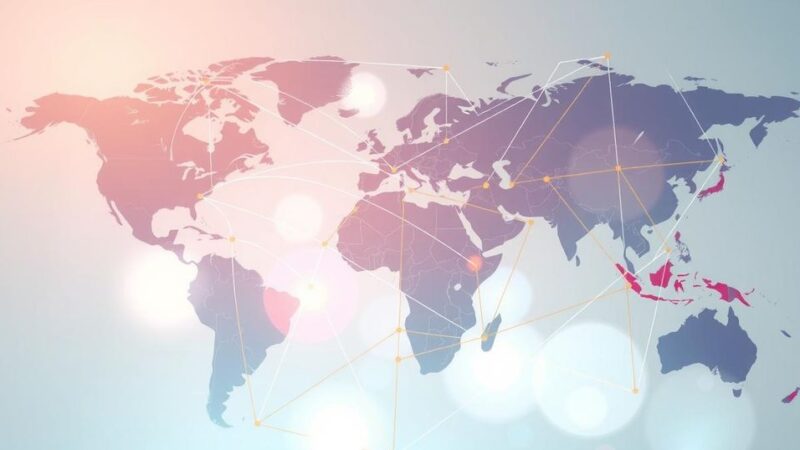The Horn of Africa is witnessing rising tensions reminiscent of the 2020 Ethiopian conflict coinciding with the U.S. presidential elections. Despite a peace agreement in 2022, issues remain unresolved, especially concerning displaced persons. Prime Minister Abiy Ahmed’s attempts to ensure Red Sea access have strained relationships with Somalia and drawn the attention of external powers like Egypt, Turkey, and the UAE. Currently, Sudan and Somalia are embroiled in significant humanitarian crises that necessitate urgent international intervention to prevent escalation and further disaster.
The Horn of Africa is once again facing escalating tensions that bear a resemblance to the pre-election conflict observed during the last United States presidential election in 2020, which was primarily focused on the situation in Ethiopia. The armed conflict between the Ethiopian government and the Tigray region erupted coincidentally with the American voting day in November 2020, leading to a devastating war that persisted for two years, undermining the nation’s stability. Although a peace agreement reached in 2022 has curtailed some of the violence in Tigray, several critical issues remain unresolved, particularly the repatriation of displaced individuals. Additionally, the coalition formed by Ethiopian Prime Minister Abiy Ahmed to quell Tigrayan resistance has deteriorated, resulting in ongoing civil discord in the Amhara and Oromia regions. As the United States finds itself again preoccupied with a competitive presidential election, the specter of renewed conflict in the Horn of Africa is looming. Prime Minister Abiy Ahmed’s determination to secure access to the Red Sea and his inclination to engage in high-stakes negotiations have provoked neighboring nations into action. His overtures to Somaliland—a self-governing region with aspirations for independence—have further strained Ethiopia’s historically complex relationship with Somalia. Meanwhile, Egypt has heightened its objections regarding the Grand Ethiopian Renaissance Dam, seeking to forge new alliances to pressure Ethiopia, and has recently equipped Somalia with arms in this regard. Eritrea, seeking to perpetuate the fragility of its neighbors, has also facilitated discussions with Egypt and Somalia aimed at maintaining regional instability. The involvement of non-African nations with vested interests in the Red Sea and Gulf of Aden adds further intricacy to the situation. Turkey has solidified its ties with Somalia, while the United Arab Emirates has maintained its rapport with Abiy Ahmed. The complexity and fragility of relationships across this historically contested region substantially elevate the risks of miscalculations potentially spiraling into open conflict. Should hostilities reignite, the first casualties will undoubtedly be African lives. Subsequently, such turmoil would jeopardize vital global shipping lanes and lead to refugee crises impacting multiple nations. Moreover, the world is already grappling with significant unrest, as evidenced by the ongoing, brutal civil war in Sudan—a humanitarian catastrophe that has not garnered adequate international attention or resources. Somalia remains mired in instability, which has augmented opportunities for al-Shabaab and may even lead to closer connections with Yemen’s Houthi militants. It is imperative that, in light of pressing domestic political concerns, the United States endeavors to swiftly alleviate tensions, avert proxy wars, and forestall further humanitarian disasters in the region.
The situation in the Horn of Africa is greatly influenced by the historical and ongoing conflicts within Ethiopia as well as the geopolitical interests of neighboring countries. The initial conflict in Tigray brought significant attention to the region, raising concerns about the stability of Ethiopia and its impact on the surrounding areas. The fragile peace established in 2022 remains precarious, as unresolved issues and the misalignment of regional interests threaten to reignite tensions. Furthermore, the involvement of both regional and international players complicates the landscape, creating a web of alliances and rivalries that exacerbate the risks of further conflict. Currently, various crises in the Horn of Africa, including the humanitarian disaster in Sudan and the security threats posed by al-Shabaab in Somalia, highlight the urgent need for intervention to prevent escalation. Understanding these dynamics is critical for addressing the looming threats in the region and the potential global ramifications of continued instability.
In summary, the Horn of Africa is at a critical juncture where renewed tensions could plunge the region into further conflict, echoing experiences from past crises. Prime Minister Abiy Ahmed’s aggressive pursuit of Red Sea access complicates relations with neighboring nations, while non-African powers further entangle the region’s security dynamics. With existing humanitarian crises in Sudan and Somalia, it is crucial that the United States and the international community act swiftly to defuse tensions and promote stability in the Horn of Africa, thereby safeguarding the well-being of millions and protecting global economic interests.
Original Source: www.cfr.org






